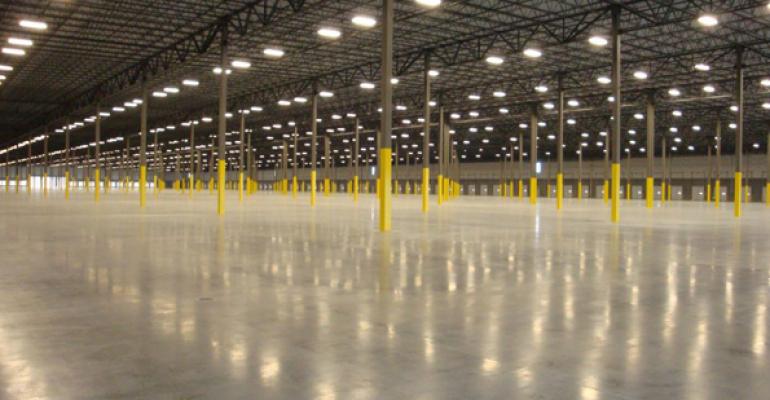Big-box distribution real estate remains a hot segment of the U.S. industrial market, with demand steaming ahead for 2014. This is a big driver behind the 96.7 million sq. ft. of new industrial construction presently underway—roughly half of which is speculative development with no pre-leasing by tenants, according to Jones Lang LaSalle's Big Box Outlook.
As demand rises across markets and size categories, both new build-to-suit and speculative development opportunities have grown. Ranking regional supply and demand by size and sector categories, the report's inaugural Big Box Velocity Index reveals some key insights of use for updating industrial investment strategy:
- E-commerce is a major force in current big-box investing success: Several top industry sectors are driving demand for new distribution space, including food & beverage, logistics & distribution, consumer non-durables and manufacturing. Comprising more than a third of industrial space market growth, however, retail distribution is the single most significant demand driver—in large part thanks to the continuing rise of e-commerce. With 5.5 percent of 2012 U.S. retail sales comprised of e-commerce, and 59 percent of the population already shopping online, it is no wonder that e-commerce is influencing tenant requirements as well as the real estate investors and developers who are investing in speculative construction. In fact, the report finds that 10 percent of current U.S. construction is directly correlated to e-commerce, and 12 percent of total square footage requirements are e-commerce related.
-
Two size segments earn most favorable marks for tenant demand: Tenant demand is prevalent in the 250,000-sq-ft. to 499,000-sq.-ft. range and the massive 1-million-sq.-ft. and up range. Of the latter, growing demand for specialty spaces like mega-fulfillment centers from the e-commerce sector is driving opportunity, particularly for build-to-suits.
Meanwhile, there is space to burn in the smallest size segment surveyed, 100,000 sq.ft. to 249,999 sq. ft., which has the most availability across all markets. Of course, space needs vary by sector; with food and beverage, logistics and distribution, and manufacturing companies much more likely to be shopping space under 500,000 sq. ft. In retail, smaller private companies are looking under 250,000 sq. ft. -
One distribution corridor boasts most activity: While overall demand and speculative building is trending up across the map, the Northeast logistics corridor adjacent to the largest density of U.S. population within a one day delivery range is seeing the most activity. Leading the country in active tenant requirements, the Northeast has five of the top six industries with space needs in the region—particularly in the larger, midsize warehouse market. It is especially appealing to retail distributors, with 55 million potential consumers and sophisticated existing logistics infrastructure. All told, the volume of requirements in the region is up by 43 percent from our last report, and New Jersey in particular is proving the best bet, with tenant requirements of 500,000 sq.-ft. and up outweighing supply.
Other regional notables: in the Midwest, tenant requirements are down 26 percent, but, thanks to e-commerce retailers, cold shell, A-space blocks in excess of one million sq. ft. should fare well. Heading west, Phoenix is a market to watch, with a handful of active requirements for spaces 750,000 sq.-ft.-plus. Meanwhile, activity in the Inland Empire is falling flat, with 18 percent of the nation's speculative industrial building raising concerns for investors of "too much, too soon."
Investor takeaway
Demand for warehouse real estate is on the up and expect to continue through 2014. Opportunities will vary by industry type, square footage category, and region. Monitoring these fast-moving big box trends will assist both developers and investors keeping them ahead of the industrial real estate supply and demand game.
Craig Meyer is president of industrial brokerage with Jones Lang LaSalle.

